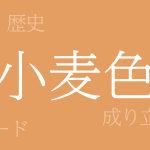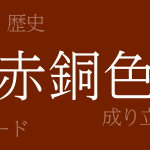Japan’s traditional colors, renowned for their unique textures and deep cultural significance, captivate audiences worldwide. Among these, ‘Brown’ (褐色 – かっしょく) is a shade found naturally in soil and nuts, symbolizing Japan’s history and aesthetic values. This article delves into the allure of Brown, exploring its meanings, historical significance, and modern applications.
About Brown (褐色 – かっしょく)
Brown, a shade deeper and calmer than standard brown, has long been cherished in Japan as a natural color. It has been used extensively in clothing, architecture, and crafts, adding a subtle warmth and elegance to traditional Japanese settings.
The History of Brown
Brown has been used since the Nara period, becoming prevalent in the Heian period among the nobility for clothing. It was particularly favored by samurai for its understated richness, symbolizing their spirituality. Over the centuries, Brown has become deeply ingrained in Japanese life.
Color Code of Brown
In digital design and web production, an accurate color code is essential to replicate Brown. Below are the typical color codes for Brown:
- HEX: #4D4C61
- RGB: R:77 G:76 B:97
- CMYK: C:77 M:73 Y:52 K:13
Western Name for Brown
In English, Brown is often referred to as ‘Brown’ or ‘Saddle Brown.’ ‘Saddle Brown’ specifically refers to the color of saddle leather, resembling the shade of Brown. These Western names are commonly used in international color communication.
Summary on Brown
Brown, a color that evokes Japan’s nature and history, is perfect for expressing the traditional Japanese aesthetic. Its calming hue is widely favored in modern fashion, design, and art, bridging tradition and modernity. As such, Brown will continue to be cherished by many.

























